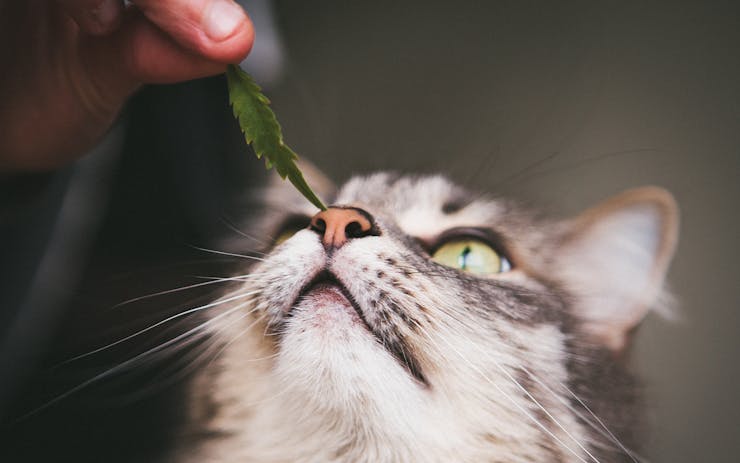As the world rediscovers the therapeutic properties of cannabis, more and more people are beginning to recognize that plant can also work wonders for their friends on four legs. Some companies in North America have already begun offering products designed for pets, and in Europe, vets, nurses, and pet owners across the continent are relaying remarkable accounts of cannabinoids effectively treating dogs, cats, and other beloved animals.
Meet Nicholas

Nicholas, a Laborador retriever from the Czech Republic, had been happy and healthy all his life. But when he was seven, his fur began falling out. The skin at the affected spots festered, and deep wounds appeared. “We were shocked by the fast onset and severity of this disease, and so was our local vet,” explained owner Martin Pešek. “He gave us antibiotics and did some blood tests, but the pills didn’t help at all, and the tests didn’t make us any wiser about the cause of the problem.”
After three weeks, wounds covered about a third of Nicholas’s body. He was weak, had a diminished appetite, and appeared to be in constant pain. Pešek and his wife Romana tried more pharmaceuticals and some ointments, but nothing worked. The local vet suggested putting him down. The owners got a second opinion. They Nicholas to the best animal clinic in the city of Brno, where he at last received a diagnosis. Nicholas, the vets said, suffered from autoimmune panniculitis, a very rare autoimmune disease. He began a special pharmaceutical treatment that carried a nearly $2,000 price tag.
Immediately after the first few doses, Nicholas began to act like his old self again. His wounds started to heal. But it didn’t last. “Unfortunately, two weeks after the wounds stopped getting better, he became [ill] and couldn’t hold the pills in anymore,” Romana Pešek said. “At this point we started to contemplate letting him go.”
Then someone introduced them to cannabis.
“We got lucky,” Romana said. “A friend was visiting the next day, and he told us about cannabis and especially about the so-called Rick Simpson Oil. We didn’t have any experience with this plant, but we didn’t have anything to lose either.”
“The golden rule is to start with little and gradually increase the amount.”
The owners obtained a coconut cream infused with a cannabis extract with 80 percent THC and 5 percent CBD. They applied it directly onto Nicholas’ sores and diluted the same extract with olive oil for oral administration. “The wounds started to heal right before our eyes,” Martin said. “He slept a lot, but when he got up, he was finally hungry and started to put on weight. We gradually increased the doses of cannabinoids and lowered the doses of pharmaceuticals.” He was “completely cured,” the Pešeks said, in two months.
“I was really happy to see Nicholas recovering so fast,” said Dr. Dagmar Tarkošová, who supervised Nicholas’ treatment in the clinic, “and I am interested in finding more about the applications of cannabis to sick animals.”
He’s Not Alone
Michael Třebavý, a Czech patient advocate and legalization activist, says he’s witnessed firsthand dozens of dogs and cats deriving benefits from cannabis. “And it’s not only about treating various sicknesses, but also about prolonging life and the quality of it,” he said. “There are cases of 18-year-old poodles or 16-year-old German shepherds who are in great shape and happy.”
Třebavý and others warned that pet owners need to start slow. Just like people need to be careful dosing edibles, it can be uncomfortable or even dangerous to give a pet too much THC. “The golden rule is to start with little and gradually increase the amount so that the body builds up tolerance and unwanted side-effects are avoided,” he advised.
The number of vets wanting to learn about cannabis as a possible treatment for animals is growing every day, Třebavý said. “In my town of only 15,000 people, I currently know two veterinarians who either recommend or directly give cannabis extracts to their patients.” But despite the benefits seen in animals like Nicholas, Třebavý acknowledged the practice “is still illegal in Czechia.”







